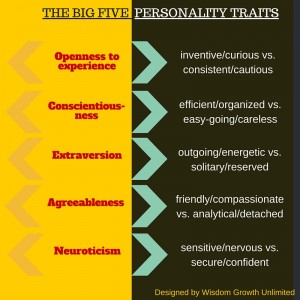13 mins read . by Sandeep Mahagaonkar . October 28, 2015

As I stood in the queue to checkout from the grocery store, I fiddled with a product in my hand and my eyes fell on the UPC barcode. It was not that I was seeing the barcode (those black vertical lines that virtually every product has these days) for the first time, but strangely, I paid closer attention to it than ever before. I tried to study and decipher the code, but it eluded my intelligence. The barcode scanner, however, at the distant counter, seemed to do its job effortlessly. As the barcode of the product was swiped against the scanner, the beep sound was followed by some intelligent data extraction and inventory updates.
On a closer look, the barcode scanner read the name of the product, the serial number, the price, and once the order was completed, the inventory was updated accordingly.
A few days back, when speaking to a CEO of a software firm, he mentioned to me about Visual Leadership. He talked about how he believes it’s critical for his people to have a purpose in their walk, irrespective of the situation. His contention was everyone around us pick visual cues and interpret body language on the job and try mapping it to what’s going on in our minds.
In essence, what he was trying to say is that our body language serves as our individual UPC bar code and is scanned, read and interpreted by the many eyes – the bar code scanners – that are all around us. Many critical aspects are interpreted by these eyes – the emotional state of the person, confidence or the lack of it, whether he is in control of the situation or the situation is controlling him, whether she intends to take the challenges head on or wishes the earth gobble her up, and so on. If the person is in a leadership position, the more important it is for him/her to display a positive body language, irrespective of the situation.
If the body language is positive – head held high, shoulders upright, strong eye contact, purpose in the strides – the subordinates know that their leader means business, no matter what the odds. However, if the body language is negative – eyes staring the floor, dropped shoulders, lack of intensity in the walk – the team can be made to believe they can take it easy as the leader seems to have gone in the shell.
The importance of body language can be clearly exemplified in sports. I remember of a cricket match that we playing and the game was evenly poised. Either sides could have won, but what mattered was which team holds on to their nerve better. Just then, we dismissed a batsman and waited for a new batsman to arrive at the crease. In cricket (and sports in general), you get to read non-verbal cues clearly – particularly when a batsman has to walk from outside the field to the crease, a good 70-75 meters, before he faces the first delivery. During the course of the walk, opposition can pick many aspects about this player, especially the neurotic aspects (see Figure: The Big Five below). This player had thrust his bat under his arms, walked slowly as he adjusted his gloves and pads, his face bearing an expression of nervousness. As he arrived at the crease, one of our players shouted to the bowler – “Get him mate. He’s already out; it’s for you to just send him back.” The field was set aggressively, with couple of guys blaring right across his face. The bloke expected a bouncer, but the bowler smartly slid a full length delivery (something the batsman never anticipated) and the wickets were rattled. The negative body language of this batsman had made more sound than the sound of ball crashing into the wood.
Steve Waugh, in his book Out of my Comfort Zone says:
“Bad body language is a bit like smelly underarms in that you don’t really sense it, but those around you pick up on it in an instant.”
Sir Vivian Richards, the West Indian batting legend is an example of extremely positive body language. His chewing of the gum accompanied the swagger, and the bat that appeared more like a sword, made him look like a warrior on the field that the opposition dreaded. Without uttering a word, his style said “C’on you boys, I’ll show you who the man is out here!”
From the latest research in neuroscience and psychology it is demonstrated that body language is crucial to leadership effectiveness. Body language is an outward reflection of a person’s emotional condition. Each gesture can be a valuable key to an emotion a person may be feeling at the time.
To drive home this point, let’s look at a research conducted (by researchers at University of Trento, Italy) to figure out the physiological responses induced by certain emotional states experienced by the participants. As described in this research paper, emotions are psychological phenomena, but they also have physiological concomitants that can be measured and analyzed. The researchers chose a set of movie clips intended to evoke certain emotions – fear, sympathy, joy etc – and the participants were plugged portable sensors measuring heart rate, skin conductance, and facial expression. Sure enough, depending on the emotion in the movie clip, there was a clear change observed physiologically (e.g.: fear inducing increased heart rate).
This study makes it quite evident that the emotions we experience – from playground to the board room to literally anywhere – reflect outwardly through our body language. These emotions could be a result of the situation we experience – an irate customer or delighted one, manager demanding more effort or showering lavish praise, a team member not owning responsibility or going beyond the call of duty to complete a task, participants in a meeting showing displeasure or engaged positively, meeting a stranger, a rumor of a possible downsizing, lack of interest or the excess of it – just to name a few. People around can make quick judgments on how we react to these situations (via nonverbal cues/body language) through any of these five dimensions of human personality:

Albert Mehrabian, a pioneer researcher of body language in the 1950s discovered the impact associated with a message in the 3 areas:
Verbal (spoken word) – 7%
Vocal (tone of voice, modulation, other sounds) – 38%
Non-Verbal (facial expression, body postures) – 55%
Studies show that we form opinions of one another within seven seconds of meeting and as Mehrabian indicated 93 percent of the messages people receive from us has nothing to do with what we actually say. Therefore, good nonverbal communication skills are a huge professional advantage.
A Human Resources VP of a large corporation mentioned in a seminar that the leadership team chose to promote a person over the other just because of the dressing sense. Competency wise, both were equals with consistent performances over the years, but the deciding factor came to how they dressed. While the person chosen for promotion was impeccably dressed, the other wore sandals to work most of the time. The contention was he was not setting a right example for his team in specific and the organization in general – and hence overlooked for a higher post.
Usain Bolt, in his autobiography Faster than Lightning, mentions of his experience in reading visual cues in the 100M finals in Beijing Olympics. Slated to race against his Jamaican compatriot Asafa Powell, Usain could sense all was not well with Asafa. He could read his nervousness before the big race – a race that Asafa wanted to win so desperately and possibly break the world record he had earlier set. Usain, who usually chilled himself minutes before the race – by taking some jibes at the camera or cracking jokes with other athletes whom he got along well with – normally felt at ease before the high pressure contest. He says he wanted to help Asafa before the race because he knew stress is an athletes’ biggest enemy. The race was to start in a few seconds, but Asafa couldn’t manage to relax himself. The runners set themselves on the starting blocks and another glance at Asafa, Usain says he could make out he was sabotaging his chances of a win. Bang! The race was underway and Usain finished a clear first – a 9.69s run and a new world record. Asafa, who was one of the favorites to win the race finished 5th. Asafa’s emotional state (nervousness) showed in his physiology (slow start and lost momentum). If stress can rob an athlete of an Olympic medal, would we at workplace not face a similar fate – that of a lost sales pitch, an interview gone wrong, a demo improperly done, or colleagues sensing your lost motivation?
What can we do to project a positive body language? Here are my 8 suggestions that I’m documenting based on the the thorough research I’ve done on the subject:
1. DRESS WELL. I just can’t emphasize how critical this aspect is. If you know you are impeccably dressed, it adds a virtual 2 inches to your height. You feel taller than what you actually are and helps exude more confidence. I see many people at work who ignore this aspect. Leadership is not about how manage your troops, but how you manage yourself.
“If you can’t play like a cricketer, at least dress like one.”
-Anonymous.
A phenomenon that scientists call embodied cognition: the effects of clothing on cognitive processes, indicates that your ability to pay attention (to a task) increases sharply depending on the attire you wear. The term, given by Adam D. Galinsky, a professor at Northwestern’s Kellogg School of Management, who found that when people don a white lab coat they believe belongs to a doctor, they become more focused and careful — effectively a little smarter when performing cognitive tasks.
For the study, Galinsky assigned 58 under grads to either wear a doctor’s white lab coat, or simply the street clothes already on their backs. He then used incongruent trials that tested the participants focus and attention. It was observed that those who wore the lab coat made about half as many errors as those who wore street clothes. Clothes invade the body and brain, putting the wearer into a different psychological state.
2. WALK LIKE A PERSON WITH ABSOLUTE CERTAINTY AND MAINTAIN POSITIVE BODY POSTURES: Research indicates not many people know how they look face down. In an experiment conducted, many people couldn’t recognize themselves in the mirror as they walked. Your strides clearly indicate whether you believe you can control any situation or feel drowned by the relentless pressure. A research conducted demonstrates that you can change the pattern of your thoughts just by the changing the way you walk. It has a simple message – Do you feel bad? Change the way you walk and you’ll be happy.
In regards to the postures, whether you are attending a boring conference, waiting for your friend to show to show up, or waiting for a batsman to get out, your posture – how you sit or stand – can affect the way you think and react. Observe whether you crouch or sloth on that chair or sit upright. According to this experiment, sitting up straight conjures up positive thoughts and memories. This study also observed that skipping during breaks can significantly increase our energy levels. A slow, slumped walk, however, can do the exact opposite and drain us of our energy.
3. YOUR TONE IS THE TONIC: It’s not what you say, but how you say it. Your facial expressions and tonality of voice give the words a completely different dimension. As a leader if you are trying to motivate your team, but if your tone (voice modulation, intonation etc.), facial expressions, and body postures are not in sync with the words you are saying, your message may not be taken seriously. Give your words a dash of intonation and relevant expression – it makes a great concoction.
4. SMILE MORE: Realize that it’s not always going to be a walk in the park. At times, life is going to grind your through the rigors of extreme pressure. But the comforting fact, as you might have discovered from your experiences is that good times shall invariably return. It’s therefore important to display a positive outlook even during turbulent times. What better place to start from than your face? In tough situations or in the aftermath, I have tried to follow the adage “What doesn’t kill me, makes me stronger” and this instantly makes the situation feel better and manageable.
“Professor Ruth Campbell, from University College London, believes there is a ‘mirror neuron’ in the brain that triggers the part responsible for the recognition of faces and expressions and causes and instant mirroring reaction. In other words, whether we realize it or not, we automatically copy the facial expressions we see. This is why regular smiling is important to have as a part of your body language repertoire, even when you don’t feel like it, because smiling directly influences other people’s attitudes and how they respond to you”
-Allan and Barbara Pease in their book The Definitive Book of Body Language
5. BE PHYSICALLY FIT: You can exude energy if you have the energy to exude. Being physically fit gives you a spring in the foot and more energy in daily routines. Studies indicate any physical activity lasting for 30 minutes a day can bring about a marked difference in the mind-body aspects.
6. USE POSITIVE AFFIRMATIONS: Using positive words and affirmations can have a significant change in your body language. Often when I greet people and ask them how they are doing, I get an answer like “going on”, “just another day”, “not bad”, “no different than yesterday” to name a few. These people normally display poor body language and appear to have lesser control on their tasks. On the other hand, people who say “Doing great”, “absolutely fine” and the vice, appear to be more positive in their outlook and in higher control of their tasks.
7. WATCH VIDEOS OF RUNNING ATHLETES: Watching videos of athletes always gives me a high and makes almost any dull moment come alive. The energy and intensity that the athlete’s exhibit can be contagious and has the potential to pump energy in to our systems in case they are drained of it.
8. COLLECT FEEDBACK FROM OTHERS: Ask the scanners around for an honest feedback. Ask your colleagues what they think of you when they see you at work. Ask your friends what they comprehend of you when they meet you. Do they see a person who’s committed and passionate about his work and life or they see someone who’s trying to see through to the end of the day. This can be a real eye opener. At times our perception and reality are two different things. I know of people who have not taken constructive feedback from team members for years. They perceive themselves to be perfect, but the reality would be that they are seen as ordinary by others. If you get a feedback that is not too positive, resolve to change the behavior. Take action. For instance, resolve to walk with intensity; to speak to colleagues more assertively and passionately; to be more jovial when with family and friends.
Try incorporating all or few of the points above in your daily routines and see the scanners around picking visual cues that are nothing short of spectacular.







